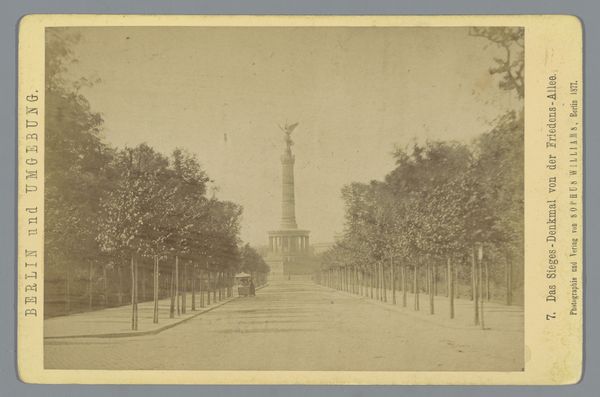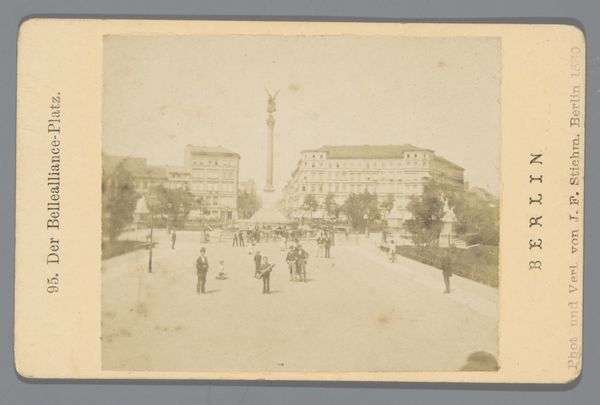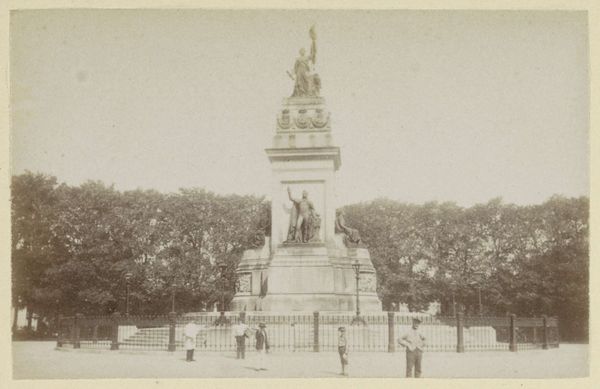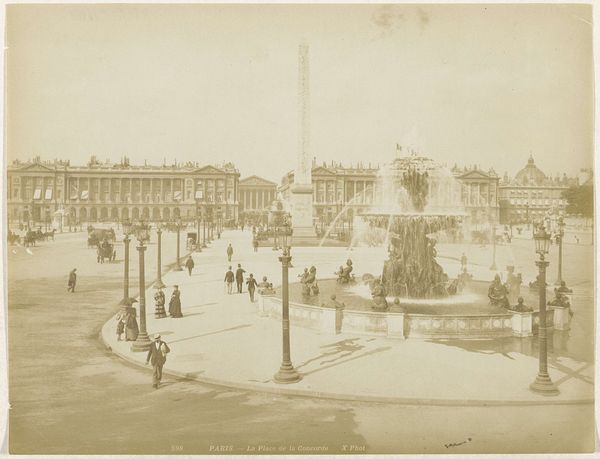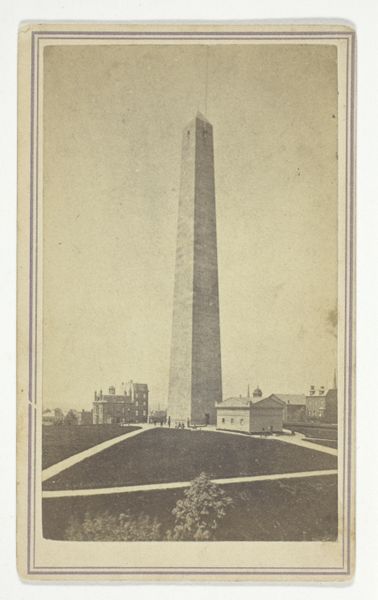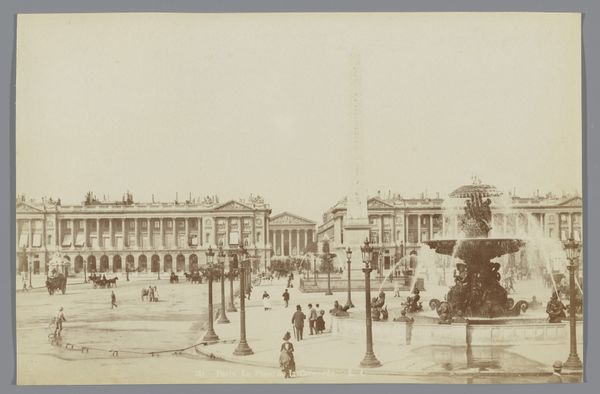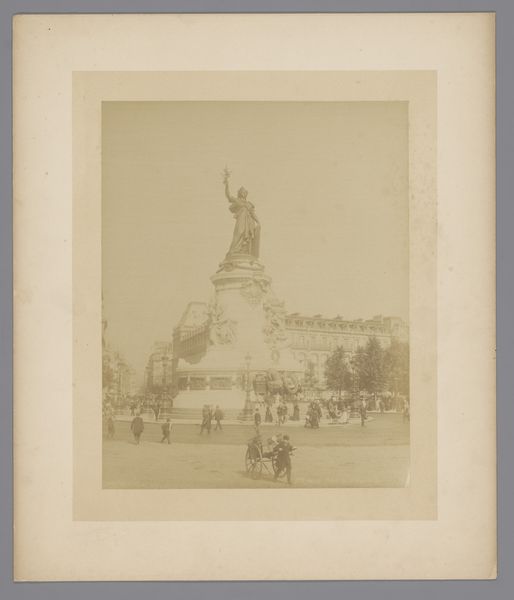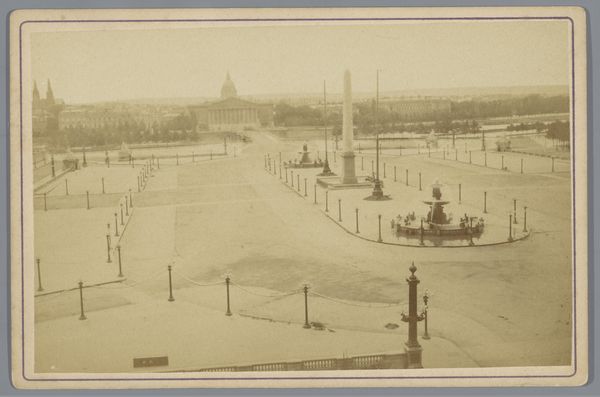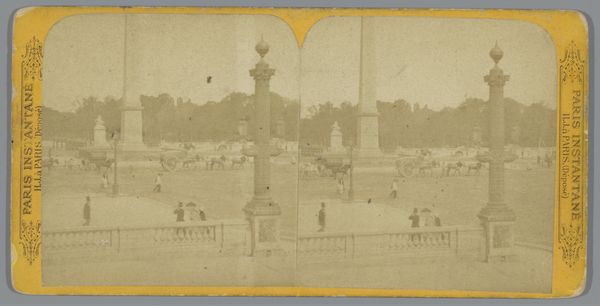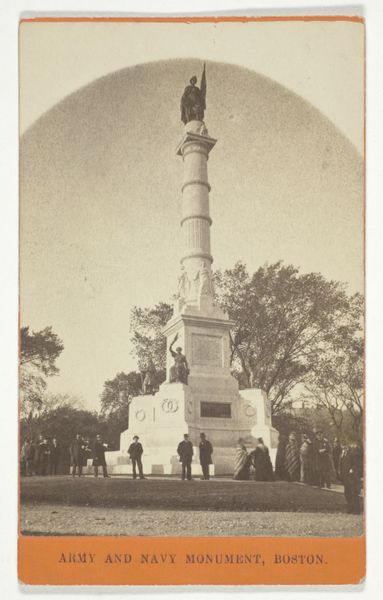
Gezicht op Place de la Concorde met de Luxor obelisk en in de verte de Avenue des Champs-Élysées in Parijs c. 1870 - 1890
0:00
0:00
print, photography, gelatin-silver-print
#
16_19th-century
# print
#
street-photography
#
photography
#
gelatin-silver-print
#
cityscape
Dimensions: height 211 mm, width 275 mm
Copyright: Rijks Museum: Open Domain
Curator: Looking at this gelatin-silver print from circa 1870-1890, we see a view of the Place de la Concorde with the Luxor obelisk and the Avenue des Champs-Élysées in Paris, captured by an anonymous photographer. It's a classic cityscape image of its time. Editor: It’s…serene, almost otherworldly. A massive open space in sepia tones, dwarfed by the obelisk. Feels strangely suspended between eras, you know? It’s like a daydream frozen in time. Curator: Absolutely. Consider the sociopolitical context of the Place de la Concorde. Once the site of revolutionary executions, it was actively being transformed during the late 19th century. The photograph captures a key period of Haussmannization, with Baron Haussmann transforming the city. This image shows the remaking of Paris as a center of imperial power. Editor: But doesn't that grandeur feel a bit...staged, maybe? Like an advertisement for progress. The shadows are stark, the geometry feels calculated. Was there even anybody there, really? Curator: What appears to be calculated could reflect a formal aesthetic. You are pinpointing some tensions inherent in realist photography during this period. We see photographers walking the line between objective documentation and subjective framing. It shows a specific worldview about modernity. Editor: I see what you mean. It does ask some big questions about how we create and present history. Like who are these tiny figures anyway and what stories did they have to tell, framed inside someone else's monument? It also feels like the dawn of the age of constant image-making in some way. Curator: Precisely! This photorealistic rendering opens a crucial discourse about the era of modernity and representation. Looking closely through our 21st century lens makes us conscious of critical questions regarding power, vision, and ideology in 19th century French history. Editor: Well, now when I look at this photograph, I can not only still enjoy the feeling of dreamlike space, but also ponder its place in cultural history and what it says about photographic representation of Paris in particular. Curator: I agree; let us proceed through the gallery!
Comments
No comments
Be the first to comment and join the conversation on the ultimate creative platform.
